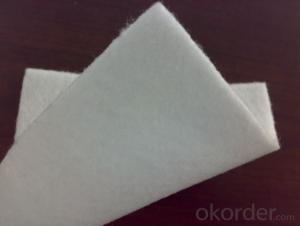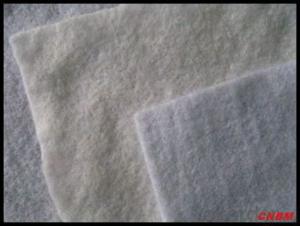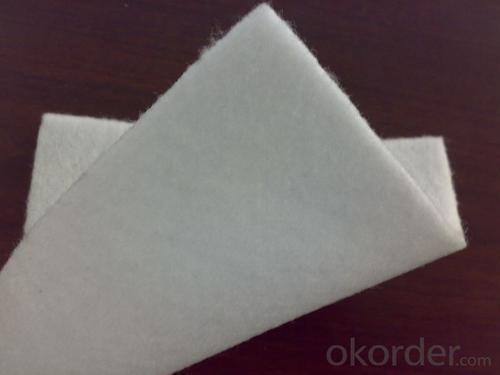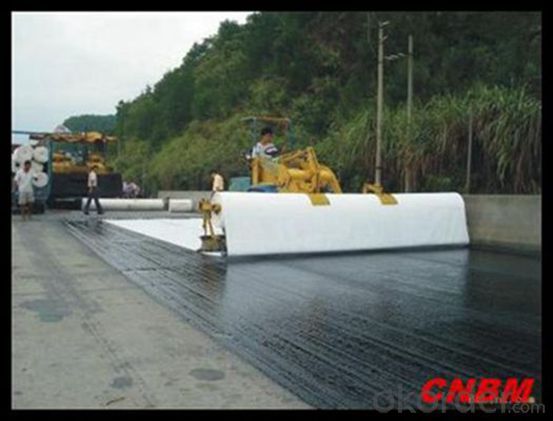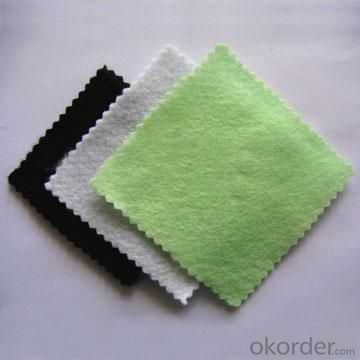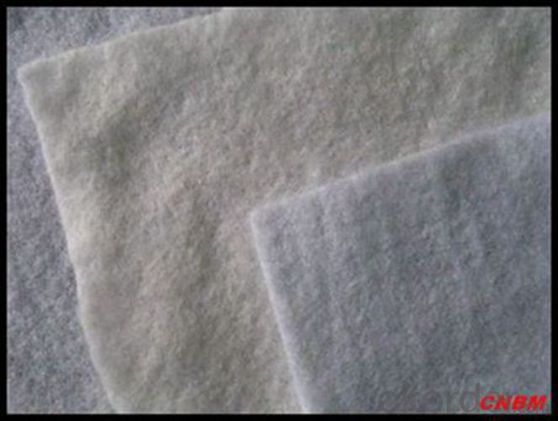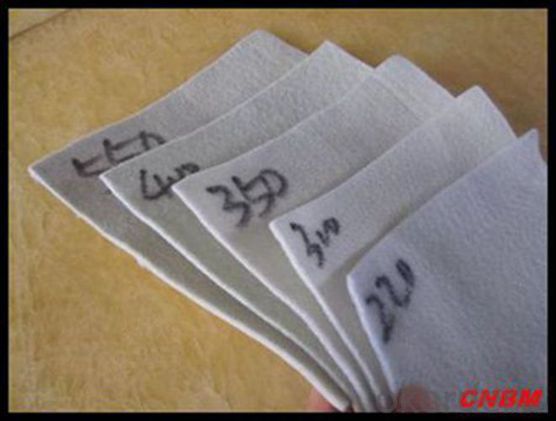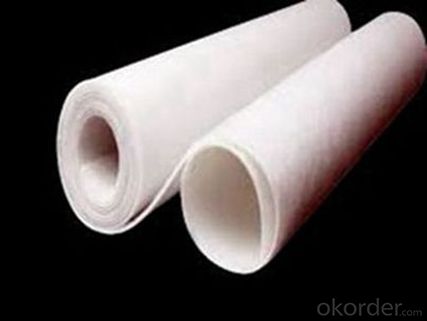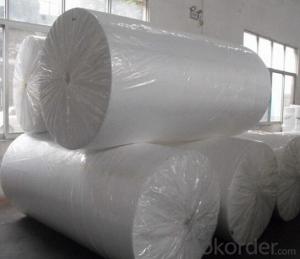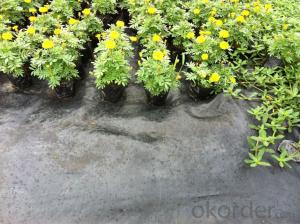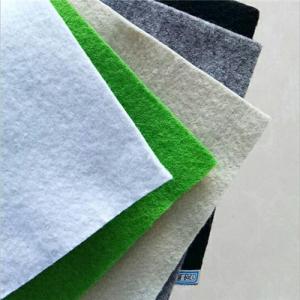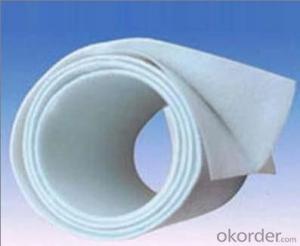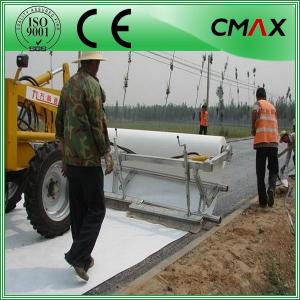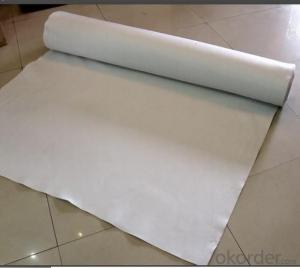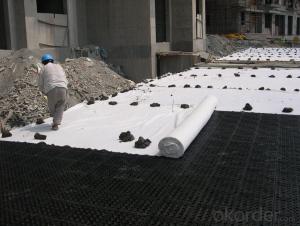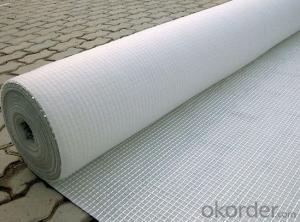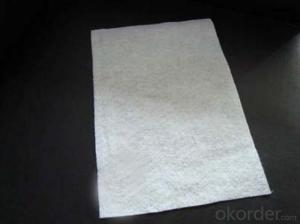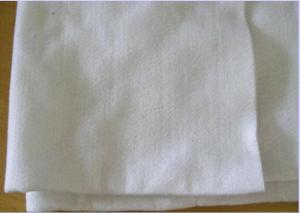Non Woven Double Punched Geotextile Fabric - Polypropylene Filter Geotextile PP Non-Woven Fabric
- Loading Port:
- China main port
- Payment Terms:
- TT OR LC
- Min Order Qty:
- 1000 m²
- Supply Capability:
- 1000000 m²/month
OKorder Service Pledge
OKorder Financial Service
You Might Also Like
Specification
Product Features
Isolation:
Use geotextile to isolate the mate rials(soil and sand,sand and gravel,soil and concrete.etc.)
with different physical properties (particle size,distribution,denseness and density.etc.);
To maintain the structure and function of them so that the load bearing capacity is strengthened.
2.Filtration:
To make advantage of the good air and water permeability of the needle-punched geotextiles to let
water flow through;
To cut off the soil grains,fine sands,small stones.etc.effectively to maintain the stability of the
water-soil engineering.
3.Drainage:
Geotextile is a great material for water diversion that it can form a drainage channel inside the soil
so that the extra liquid and gas inside the soil structure is discharged.
4.Reinforcement:
Making use of the geotextile’s strong pull resistance and deform resistance to the stability of the
buildings’ structure in order to increase the soil’s quality.

Function
The main function of these geotextiles is to offer separation, filtration and primarily protection,
• Separation and stabilization in road and railway construction
• Prevention of soil movement in erosion control measures
• Cushioning and protection in many containment projects.
Our Service
Quality assurance
1.On a regular basis or as per your request,we entrust national testing agencies to conduct quality inspections
2. Strictly in accordance with the ISO9001-2008 international quality system standard,we monitor and manage the whole process throughout production,quality testing,and measurement to ensure product quality
3. For quality-related construction delay or substandard construction(except for damage or losses due to customer’s responsibility or irresistible natural disasters),we have refunding,replacement,and repair services.We will respond to customers’ feedbacks on quality issues within 24 hours.
FAQ:
Q: What kind of payments does jenor support?
A: T/T, L/C, Cash are accepted.
Q: Do you charge for the samples?
A: Accordeing to our company policy, the samples are free, we only charge the freight fee. And we will return the freight fee during the next order.
Q: Can you produce according to customers' design?
A: Sure, we are professional manufacturer, OEM and ODM are both welcome.
Q: Do you have other products?
A: Yes, please check the pictures:
Packaging & Shipping
Packing: PLASTIC FILM INSIDE, AND WOVEN BAG OUTSIDE
Shipping: About 15 days after receipt the deposit
- Q: Are geotextiles resistant to punctures and tears?
- Yes, geotextiles are designed to be resistant to punctures and tears. They are manufactured using durable materials and undergo rigorous testing to ensure their strength and durability in various applications.
- Q: What are the different functions of geotextiles in geoenvironmental engineering?
- Geotextiles serve various functions in geoenvironmental engineering, including erosion control, soil stabilization, drainage, filtration, and reinforcement. These materials prevent soil erosion by acting as a barrier against water flow and wind forces. They also stabilize soil by improving its mechanical properties, preventing soil movement and settlement. Geotextiles facilitate drainage by allowing water to pass through while retaining soil particles. They serve as a filtration layer, separating different soil layers and preventing the migration of fine particles. Additionally, geotextiles are used for reinforcement purposes, enhancing the strength and load-bearing capacity of soil structures.
- Q: Can concrete slabs be placed directly on geotextiles?
- Huazhi geotextile material manufacturers
- Q: Subgrade geotextile lap law need to suture it
- General geotextiles require stitching. Geotextile stitching must be carried out continuously. Before the overlap, the geotextile must overlap at least 150mm. The minimum seam distance from the geotextile edge is not less than 25mm.
- Q: What are the advantages of using geotextiles in landfill lining systems?
- Geotextiles offer several advantages in landfill lining systems. Firstly, they provide excellent filtration, allowing liquid to pass through while preventing the migration of fine particles and contaminants. This helps in maintaining the integrity of the landfill and protecting the surrounding environment. Secondly, geotextiles enhance the stability of the landfill by preventing soil erosion and promoting proper drainage. Additionally, they act as a barrier against punctures and tears, extending the lifespan of the lining system. Geotextiles also offer flexibility, making them easy to install and adapt to the shape of the landfill. Overall, their use in landfill lining systems improves performance, durability, and environmental protection.
- Q: Basically I'm thinking of doing a thesis defense on this topic and I want to know if it is any good.
- Any bio-degradable material is not a better substitute for a geotextile material in long run Materials from polymer family may suit better, like Polyamide Polypropylene Polyethylene My answer refers to about having the ability to separate, filter, reinforce, protect, or drain If your purpose of using geotextile material regarding Beach Erosion, Riverbank Erosion, then coconut fibers is a better option
- Q: What are the design considerations for geotextile-reinforced slopes?
- Some design considerations for geotextile-reinforced slopes include the slope stability analysis, soil properties and characteristics, selection of appropriate geotextile material and specifications, design of the reinforcement layout and spacing, evaluation of potential effects of water flow and drainage, and consideration of long-term performance and maintenance requirements.
- Q: Where to sell waterproof geotextile
- Building materials market should have hope to help you
- Q: Ask geotextile factory in the use of geotextile aperture detector detection method which?
- Hello, geotextile detection method in GB / T and GB / T geotextile aperture in the introduction, you can look at these two standards. The first is geotextile pore size detection wet sieve method, the second is geotextile aperture detection dry sieve method. As the name suggests the first of these two methods is the participation of water, the other is basically the same, are placed in a single layer of geotextile standard small particles, through the vibration to detect the size of the leakage of particles to determine the geotextile pore size size. The difference is that the first standard in the need for continuous water on the particles, so the calculation method are also different. Specific detailed distinctions You can search these two criteria separately.
Send your message to us
Non Woven Double Punched Geotextile Fabric - Polypropylene Filter Geotextile PP Non-Woven Fabric
- Loading Port:
- China main port
- Payment Terms:
- TT OR LC
- Min Order Qty:
- 1000 m²
- Supply Capability:
- 1000000 m²/month
OKorder Service Pledge
OKorder Financial Service
Similar products
Hot products
Hot Searches
Related keywords
